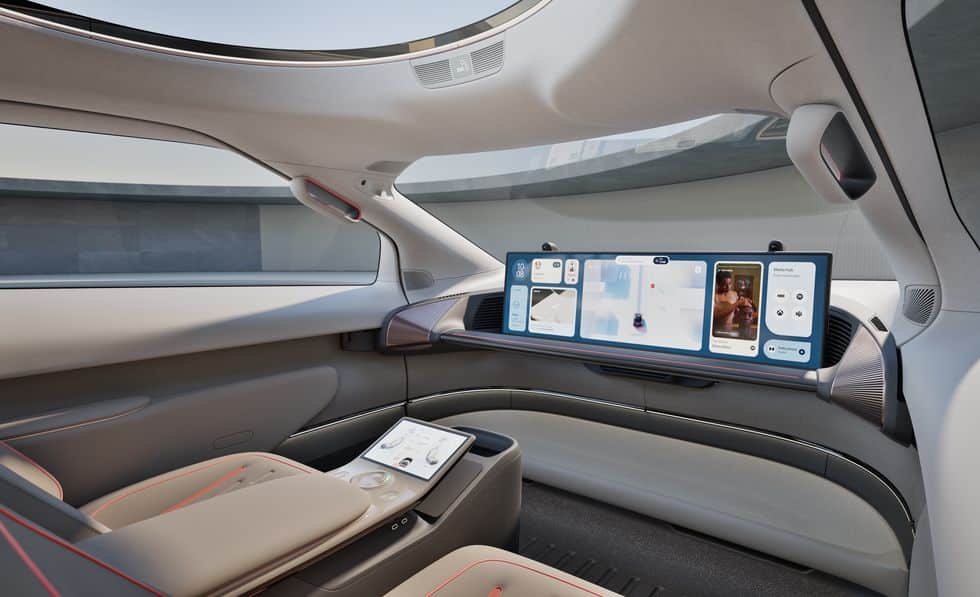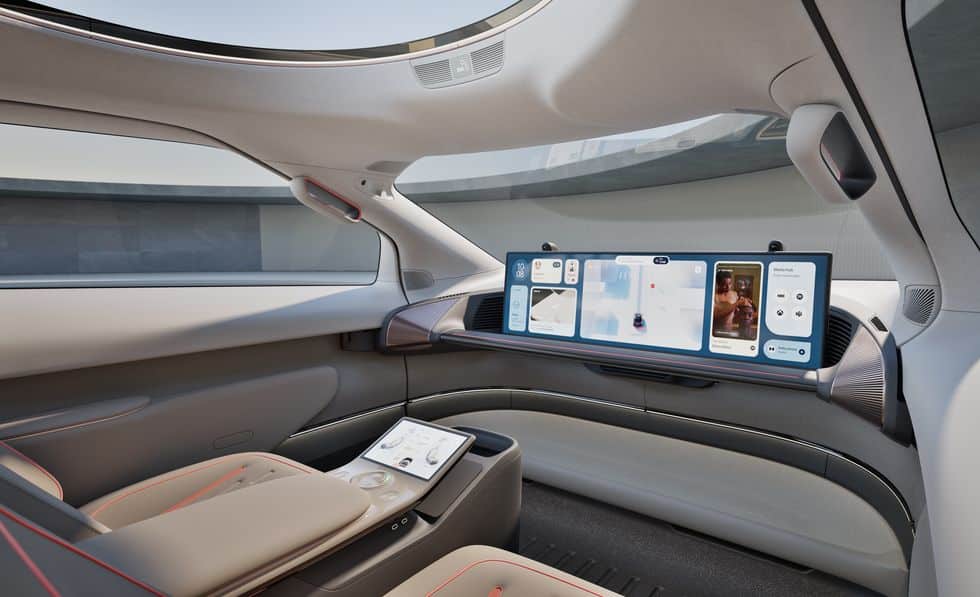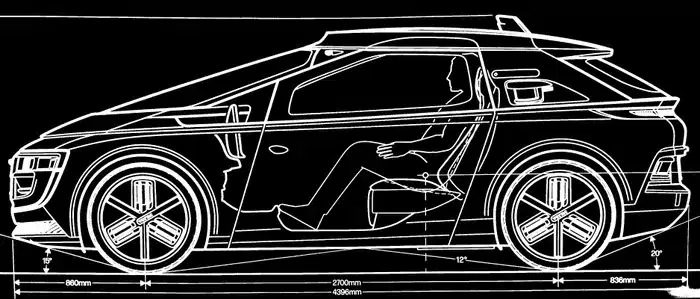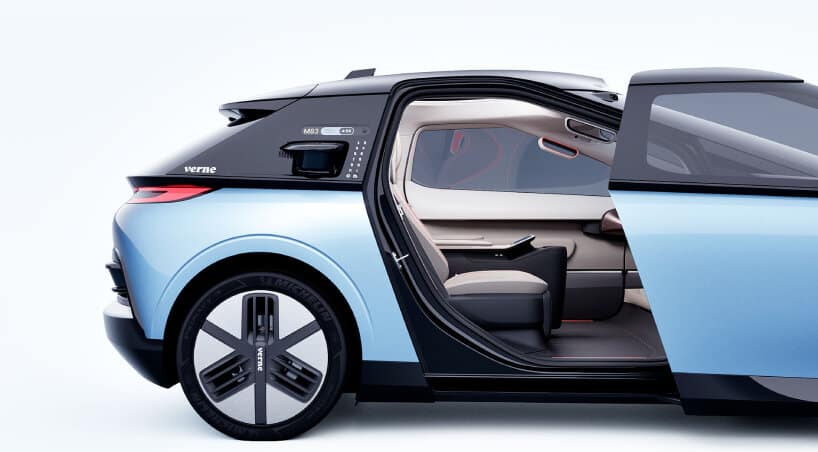
Written Content
Mate Rimac, the CEO of Bugatti and founder of the Rimac group, has achieved large recognition in the car industry by building the fastest electric road car in the world, the Rimac Nevera. Now he has turned to revolutionizing the autonomous car experience with his newest car, the Verne.
The Verne is a two passenger electric self-driving car powered by lidar technology from MobileEye, which is already being used in and gathering information from many cars like BMWs and Nissans in cities around the world. Like Uber, Lyft or Waymo, customers download an app to pay for and request a ride. Rimac has been working on prototypes of the car since 2020 and anticipates having it on the roads in Croatia (where the company is based) by 2026. The company is already working with 11 different cities in the UK, Germany, and the Middle East to get the Verne on the road by 2027 or 2028.
Verne - What sets it apart from the competition?
With so many companies like Amazon, Tesla and Google competing for space in the emerging self-driving car space, companies have to be very intentional about what they bring to the table if they are going to have a shot. Drawing a comparison to Apple, Rimac doesn’t see a need to be the first in the market, just to have the best user experience.
Most self-driving car companies are starting by converting regular cars into self-driving cars. They still have a steering wheel, pedals and a dashboard—things that are completely useless in truly autonomous cars. Rimac started from the ground up to reimagine what an autonomous car could be. Of course, they aren’t the first to do this.
Amazon’s Zoox robotaxi is free of steering wheels and dashboards, but it also looks like a toaster. The Zoox maximizes seating in the car, despite 9 out of 10 taxi rides having two passengers or less. One of Rimac’s visions is to make luxury accessible to everyone, so they wanted their car to feel like riding in a Rolls-Royce. This begins with the outside of the vehicle, which they describe as looking like a “spaceship landed on a 70’s sports car,” and is continued on the inside with thoughtful choices and high end materials designed to maximize comfort.
Verne - The Cost
But this focus on luxury doesn’t necessarily come with an additional price tag. In fact, Rimac anticipates that riding in a Verne will cost less than a taxi, due to intense optimization of costs through scalable infrastructure.
For example, Rimac plans on building “Motherships” which will clean and charge cars, as well as providing any maintenance that a car might need. Each mothership is capable of maintaining 500 cars and has been designed so that cars only need to spend 30-40 mins per day being cleaned and charged, leaving 23.5 hours for the car to be profitable. They even have smell sensors in each car to ensure that cars are cleaned as soon as they need to be.
Because of this optimization, Rimac doesn’t need many cars on the road to compete with Uber and other taxi services. Cars will learn to predict rider needs and spread themselves evenly throughout a city to reduce customer (and car) wait times.
The Verne’s luxury customer experience combined with potential affordability gives it a shot at competing with much larger tech companies with more resources. Keep reading for more details about the Verne.
Verne - The Design
The outside: The lidar sensors and cameras that make the Verne autonomous are hidden in the car’s design, giving it the look and feel of a regular car. Rimac wants a car that people enjoy seeing on their streets, and it blends in well with other cars.

Customization: In the app when you summon a car, you can pre-set preferences for your ride such as the inside temperature, color of ambient lighting, and even the smell of the car. It is meant to feel like your own car, or at least your own version of the Verne.
Thoughtful interior: There is a massive amount of legroom, and seats that recline. The cup holder has memory foam to accommodate different sizes of objects and there are no hidden compartments to store things that might get accidentally left behind. The windows can be dimmed for a commute nap.

Privacy: Rather than having video and audio surveillance in the car, the Verne only has cameras which take pictures at the beginning and end of a ride to document the condition of the car when it is left. Ride privacy is something that they consider extremely important.
Entertainment: The Verne features a large front screen where passengers can watch the car’s progress, or listen to music, watch movies, and play Xbox.

Verne - The Specs
- 60 kwh battery
- Front wheel drive
- 200 horsepower
- 2.1 tons
- 600L trunk
- 6 short range lidars
- 1 long range lidar that can see up to 500m ahead
- Cameras positioned around the car to reconfirm that all signals are matching

Verne - The Takeaway
Car ownership and self-driving cars will be the next major disruption and expansion of the auto industry, already one of the biggest industries in the world. While nailing the technology is essential, and the focus of major companies like Google and Amazon, Rimac is looking two steps ahead. Their design choices indicate their focus on what comes after the technology is sorted out: how to get people to widely adopt the technology. Making the Verne feel personalized to the rider, packaging it in a way that is familiar to customers, and reimagining what the inside of a car should look like for a passenger are all things that will encourage users to pick Verne over other autonomous cars once they hit the streets. Verne will be one to look out for as autonomous cars begin to take over big cities.

No comments yet…